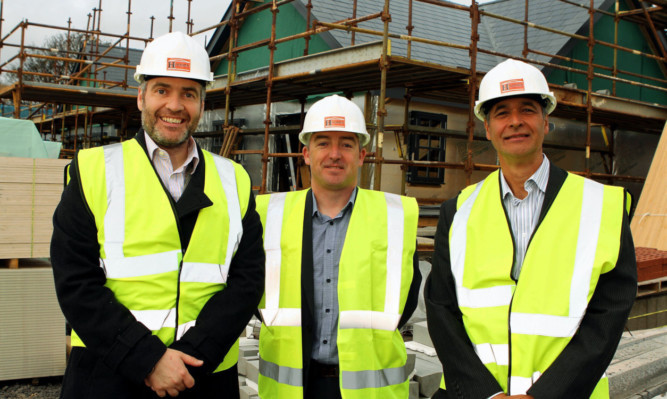A £2 million housing scheme including “homes for heroes” is taking shape in Carnoustie.
The new-build, affordable housing development by Angus Council has 11 properties eight one-bedroom cottages, two two-bedroom cottages and one four-bedroom family home.
A further five properties are being constructed for Houses for Heroes Scotland, which provides homes for disabled veterans and will manage and maintain the buildings.
The properties are allocated through the Veterans Scotland Central Housing Register, with priority given to younger veterans injured in recent conflicts.
Speaking during a site visit yesterday, the council’s housing spokesperson Donald Morrison said: “This development will be a very welcome addition to the supply of affordable rental accommodation in south Angus, particularly the one-bedroomed properties, which are in high demand because of the bedroom tax.
“In addition to the five wheelchair-accessible properties being constructed for Houses for Heroes Scotland, we are also adapting two of the council properties for existing tenants, increasing the overall number of properties available to Angus residents with special housing needs.”
The Houses for Heroes Scotland plans proved contentious when they came before elected members last year.
The charity will lease part of the Camus House site at a peppercorn £1 rent for 100 years, which supporters said would further the council’s 2012 covenant to assist former and injured service personnel in their transition back to civvy street.
Despite widespread support for the Houses for Heroes plan, however, there was criticism from some quarters that the Carnoustie scheme had not included units for locals with additional needs.
Richard Callander, the chairman of Houses for Heroes Scotland, praised the progress being made at Camus Crescent.
He said: “This well-designed development will offer homes tailored to the specific needs of young veterans injured in recent conflicts.
“The provision of five adapted, affordable houses will enable five more disabled veterans’ families to live comfortably in their home and be part of a community within a community.”
